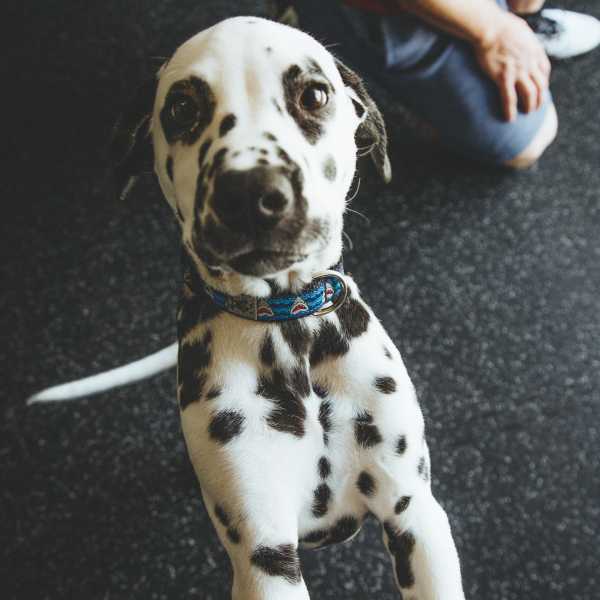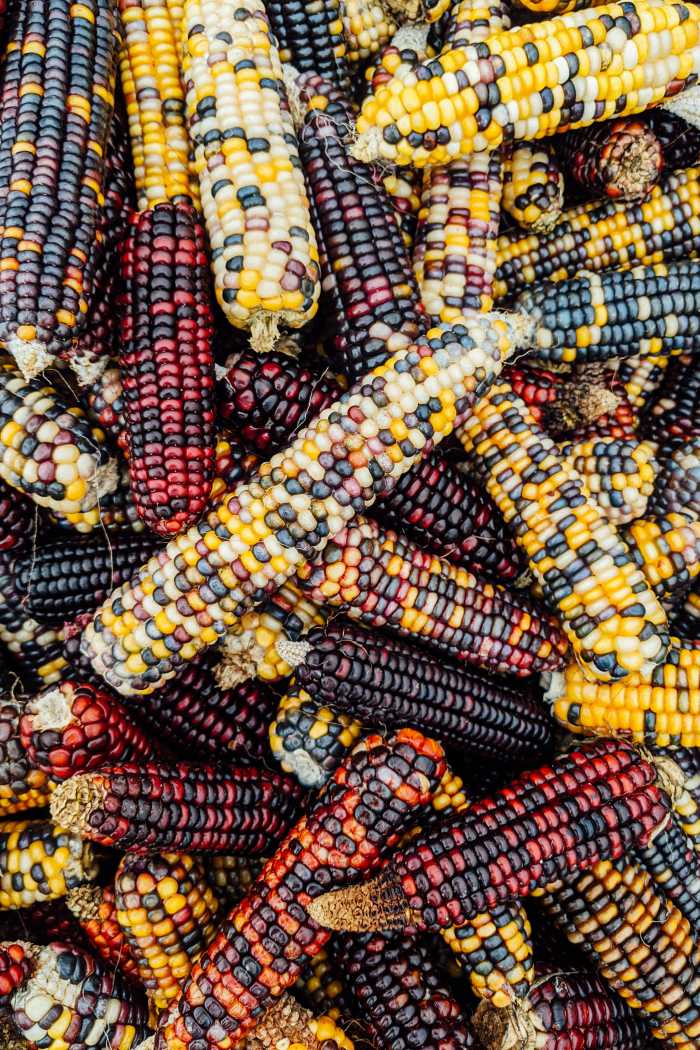
Your Dog Advisor - Can Dogs Eat Corn? The Truth About this Common Ingredient
Posted on 2 July, 2021

Photo by Markus Winkler on Unsplash
Written/published by Sara Seitz for Your Dog Advisor
There is a lot of controversy about corn and canines. So much so, in fact, that you may be wondering if your pup is going to get sick after stealing that cob off your plate.
In this article, we will discuss whether or not corn is safe for dogs to eat, whether it is a good thing or bad to feed your dog kibble containing this common grain, and what you can do to make sure your pooch is eating what they should.
Is It Safe for Dogs to Eat Corn?
The short answer here is yes, dogs can eat corn
This fleshy grain is filled with a lot of nutrients your dog needs. It is brimming with B vitamins, magnesium, and calcium. It also has a lot of fibre which may or may not help your dog form better stools.
Assuming your dog is not allergic to it (more on this later), there is little harm in feeding this grain as a treat every once in a while. Just make sure you are feeding only corn and not all the butter and salt that usually accompanies it.
Unflavored, salt-free popcorn makes a tasty treat. Even cooked or raw kernels off the cob can be eaten by dogs, just don’t be surprised when it comes out the other end looking exactly how it did going in.
You should not let your dog eat whole cobs, however. These highly fibrous stalks are very difficult to digest and could cause an impaction in your dog’s gut. Always keep cobs–even those you’ve picked clean–out of your dog’s reach.
The Problem with Corn as an Ingredient In Dog Food
While corn is fine to feed as a treat in moderation, it is much less desirable as a dog food ingredient.
There are plenty of people out there who would disagree with this statement. Most of them have some connection with dog food companies who routinely turn out corn-filled pet foods. And the rest have either been educated by or unknowingly swayed by these same people.
The reason for this controversy is easy to see. After all, if a dog can eat this grain and it is full of nutrients, why shouldn’t it be included in their daily diet?
To understand why it is worth avoiding dog foods filled with corn, we need to take a deeper look at how this ingredient is used in creating dog food and what it does and does not bring to the table.
A Cheap Filler
The most widely used argument against corn in dog food is that it is used simply because it is cheap.
Packing pet food with cheap ingredients lowers the overall cost of production which means more profits for the company in the end. And corn, especially varieties that are GMO and pesticide-laden, is very cheap.
When manufacturers include a lot of fillers in their food, they don’t have to pay for higher-priced ingredients like meat, vegetables, and fruit. And since grains are full of carbs, fiber, and some protein, producers can get away with adding a lot of it without completely changing the macronutrient makeup of the food itself.
If your dog’s food is filled with corn, then it is lacking in the two things they really need: animal-sourced protein and quality fats.
Plant Protein vs Animal Protein
It is true that corn has protein in it–all grains do. The magic of GMO foods and the refining process has even allowed manufacturers the ability to separate out the high protein parts of the kernel and isolate them. This allows them to up the total protein of the dog food without having to step away from their favourite cheap filler ingredient or add more meat.
But the protein found in plants is not created equal to the protein found in meats. And, equally important, dogs’ systems struggle to digest plant-sourced proteins.
All protein is broken down into amino acids in the body. These amino acids are used for everything from cell communication to energy production. Some amino acids can be created within the body using others absorbed from food while “essential” amino acids can only be gained through diet.
Animal-based protein contains all amino acids in fairly equal amounts. Plant-based protein, on the other hand, contains varying amounts of amino acids and most sources do not contain all of them in significant quantities.
Because dogs are carnivores, their bodies evolved to utilize the amino acids available in meat. Feeding dogs largely plant-sourced proteins naturally leaves them lacking in certain essential amino acids.
Furthermore, dogs have a relatively short gut compared to humans and other animals that rely primarily on plants for nutrition. This means they struggle to properly digest plant protein which, in turn, means they absorb even fewer amino acids than the meager amount available.
But this inability to digest food doesn’t just affect how canines absorb plant proteins.
Nutritional Availability
Corn is full of nutrients and makes a healthy–although higher calorie–snack for humans. But canines are not privy to the same nutrients that we long-gut humans are.
Dogs evolved a short gut in order to move meat, which has a tendency to rot quickly, out of the body as soon as possible once digestion in the stomach is complete. Omnivores and herbivores, on the other hand, have a long gut because it takes a significant amount of time to break down and absorb the nutrients in fiber-heavy plant foods.
When a dog eats food filled with grains, they struggle to break down the kibble to extract the nutrients inside. This doesn’t just affect those vitamins and minerals in the plant ingredients, but all of the nutrients in the food.
Dogs who eat kibble made primarily of plant ingredients are more likely to be nutritionally deficient and lacking in certain amino acids. They are also much more likely to produce large or frequent stools.
In order to provide enough available nutrients to your pup, you have to feed more corn-based food than you would need to if you fed a quality animal-protein based food. But feeding more food to balance certain nutritional deficiencies often leads to dogs consuming too many calories, which can lead to weight gain and other health complications.
Corn Allergies
It is not just a lack of available nutrients and protein that makes feeding a corn-heavy diet risky. Many dogs, when fed the same low-quality food for years, will develop allergies to this common grain.
Dogs can develop a food allergy to any type of food they have been exposed to. The longer a dog eats a certain ingredient, the greater the chances they will develop an allergy to it.
Because corn is such a common ingredient in a wide variety of cheap dog foods, many dogs eventually develop an allergy to it.
Unfortunately, food allergies are not always easy to identify. And many dogs struggle for years with seemingly unrelated health issues before their owner realizes it is their food causing the problem.
Some common signs of a food allergy include:
- Itchy skin
- Hair loss
- Hot spots
- Ear infections
- Diarrhoea
- Excess gas
- Chronic illness
- Joint pain
- Sneezing
- Bacterial infections
Once your dog develops a food allergy, they will not be able to eat food containing that ingredient any longer.
To determine what your dog is allergic to, you will need to perform an elimination diet. If they are on a low-quality food, it is a good idea to switch to a higher-quality diet regardless of whether corn turns out to be the allergen or not.
How to Choose a Quality Corn-Free Dog Food
Despite the prevalence of corn-filled dog diets on the market, there are plenty of alternatives available.
If your dog suffers from a grain allergy or you are interested in providing a more nutritionally-dense, protein-optimized food, you have some options to consider.
Dry kibble is the most popular type of dog food out there. When choosing a bag of this type of diet, look for quality meat ingredients listed first in the ingredients list. And be aware of other grains and plant-based ingredients listed too high or split into multiple types (i.e. “peas, pea protein, ground peas”).
We recommend Wellness, Zignature, and Orijen dry kibble diets. To learn more about the quality options available, check out our list of the best dog food brands.
Canned diets are another option that includes many corn-free varieties. This type of food can be pricey to feed to larger dogs but works well for small breeds. You can also mix it with dry kibble to add more taste and nutrition to your pup’s diet.
There are many quality adult and puppy canned food diets to choose from. Just as with dry food, make sure you pick one with quality meat ingredients listed first and no fillers.
Beyond these two traditional choices, there are some great less-common options for feeding Fido.
Raw diets, both homemade and commercial, and dehydrated and freeze-dried foods provide exceptional nutrition at a variety of price points. Best of all, none of these types of diets use corn in their recipes.
To learn more about the differences and advantages of each type of food listed above, check out our article on the healthiest dog foods.
The Bottom Line On Corn and Canines
When it comes to feeding Fido corn, the rule is moderation.
The occasional popcorn or corny snack is fine if your dog doesn’t have any grain allergies. But be sure to avoid foods that utilize this grain as a major ingredient and instead, opt for a nutrient-dense, quality dry, canned, raw, or dehydrated diet.
To read the original article written/published by Sara Seitz for Your Dog Advisor, please visit https://yourdogadvisor.com/can-dogs-eat-corn/
Tags:



